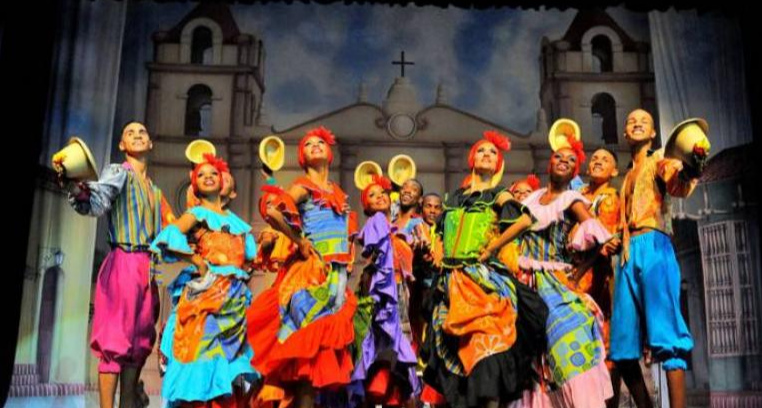
Photo: Camagua Company
Havana, April 26 (RHC)-- It is enough to see a show by the Camagua Company to understand the concept of the theatricalization of folklore, as taught by the great masters Ramiro Guerra and Rogelio Martínez Furé (well, by many others).
Professional companies do not make folklore. It is up to the companies to recreate, to stylize, to hierarchize expressions of popular heritage. Folklore is made by the people. And I know I am using a term, folklore, which is currently under discussion in academic circles. But, we insist, the cultural traditions of the people are maintained, defended and even evolved by the people themselves. And that is a starting point for professional companies.
Camagua has shown once again, in its successful season at the Covarrubias Hall of the National Theater, the exquisite and spectacular work of recreation and staging of dissimilar cultural traditions, in a rigorous process of research that has meant essences, matrixes and nuances, indisputable referents of habitual practices... and has turned them into pieces that respect fundamental guidelines of the scenic representation.
To theatricalize means to discriminate (in the good sense of the word), that is, to choose from an original material what is most convincing aesthetically and conceptually speaking, and to reorganize it, starting from a defined notion of dramaturgy, stylizing movements and routines, establishing new group dynamics... all, I insist, without betraying identity traits.
It is not an easy task. Because a show for the stage is not, or should not be, a faithful testimony of the practices of the so-called focus. But at the same time, it cannot detach itself from those practices to become a folkloristic, superficial vision of the heritage it intends to honor.
What maestro Fernando Medrano has done with the peasant traditions of Majagua, or the dances and songs of the emigrants and descendants of Jamaican emigrants in Baraguá, both towns in Ciego de Avila, is to highlight a legacy in a choreographic and musical conception for the stage. And all articulated with good taste, sense of contrasts, functional alternation of tempos, interesting spatial designs.
The same could be said of the choreographies of Bárbara Balbuena, who is an authority in these matters. She starts from deep-rooted practices, with a strong religious spirit or a singular popular impact, and submits them to a rigorous curatorship that emphasizes aesthetic values without denying concepts. What she brings to the stage is not a document, it is art.

